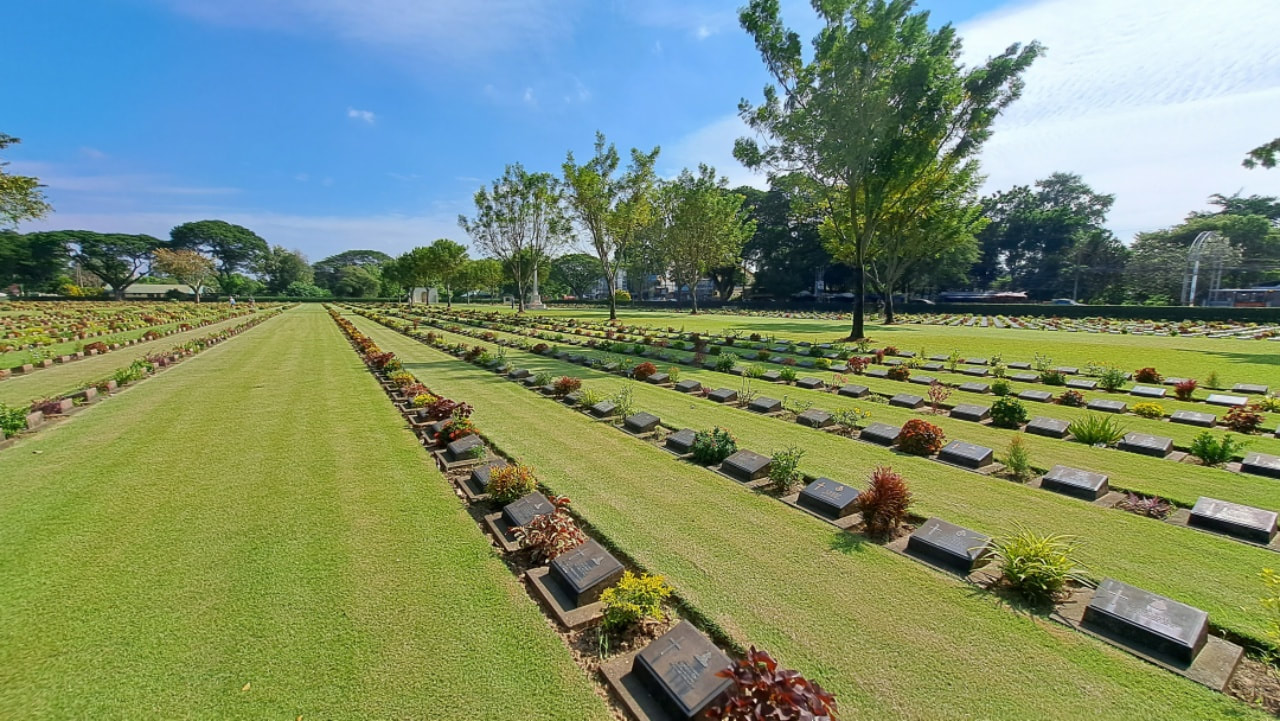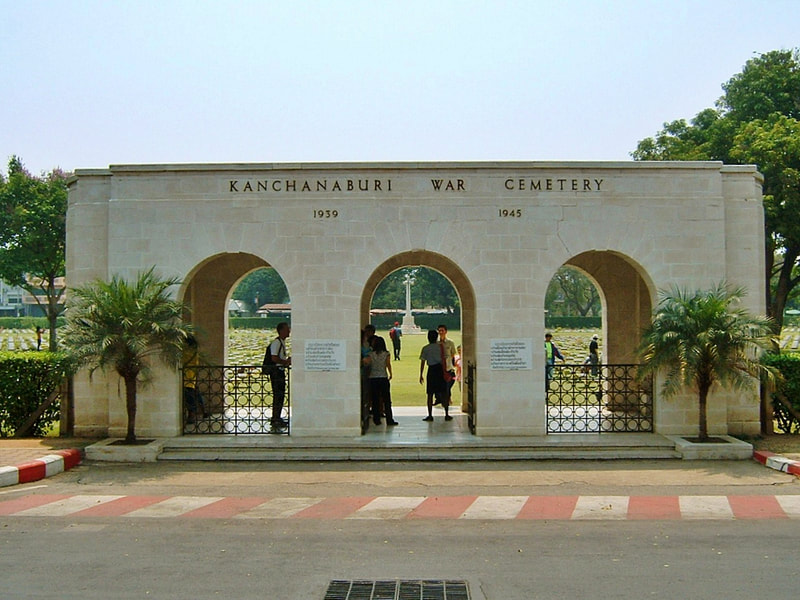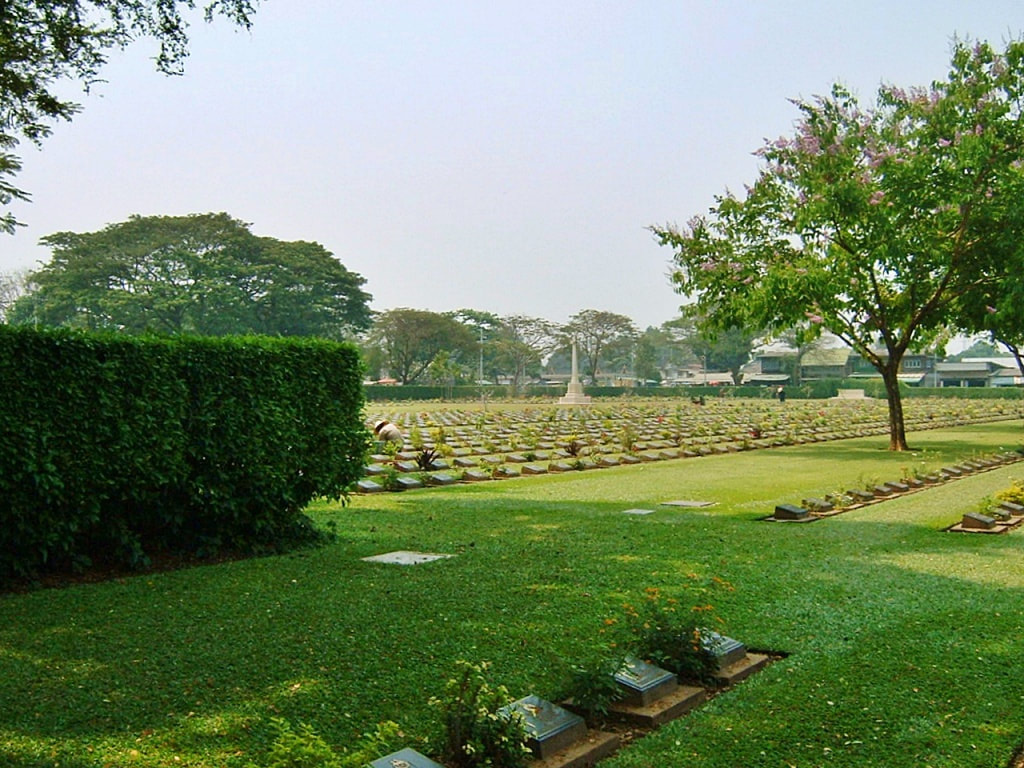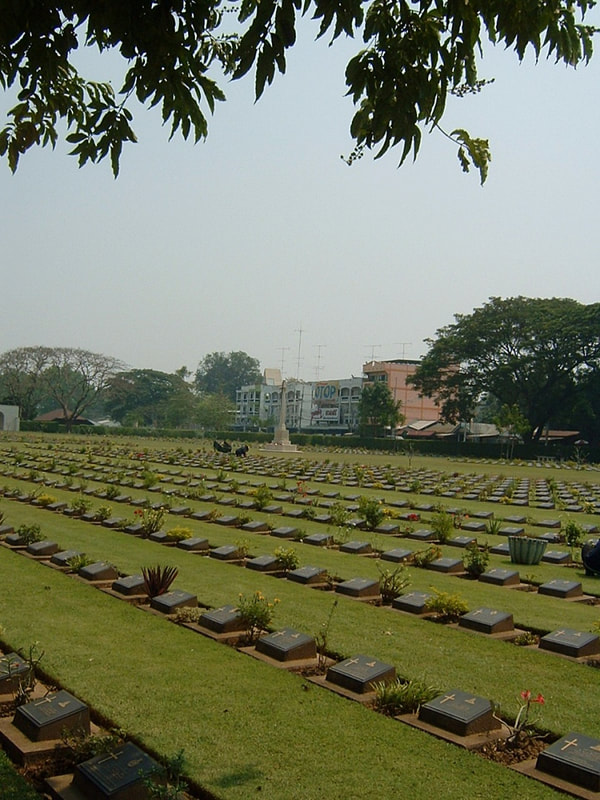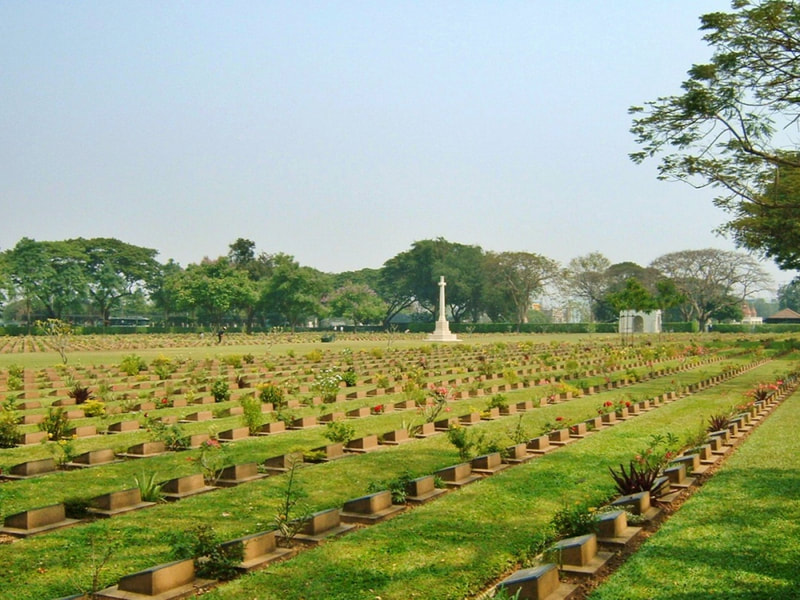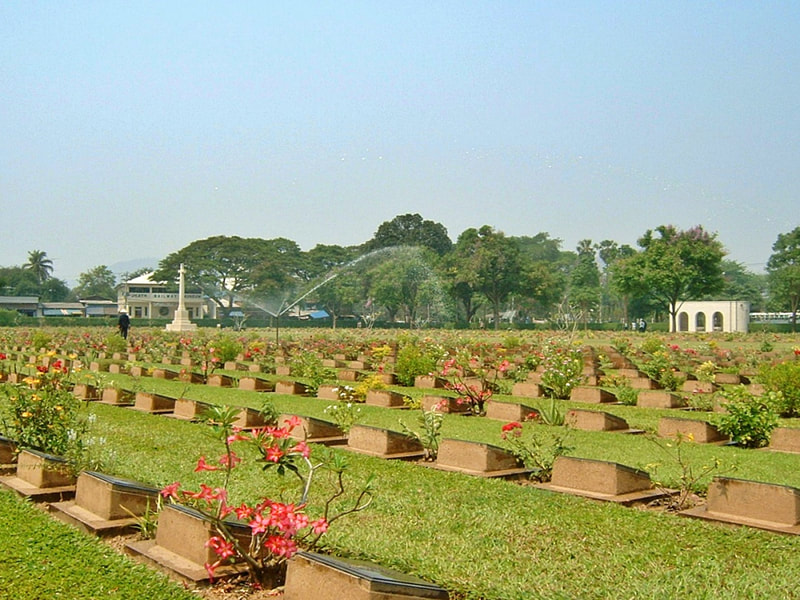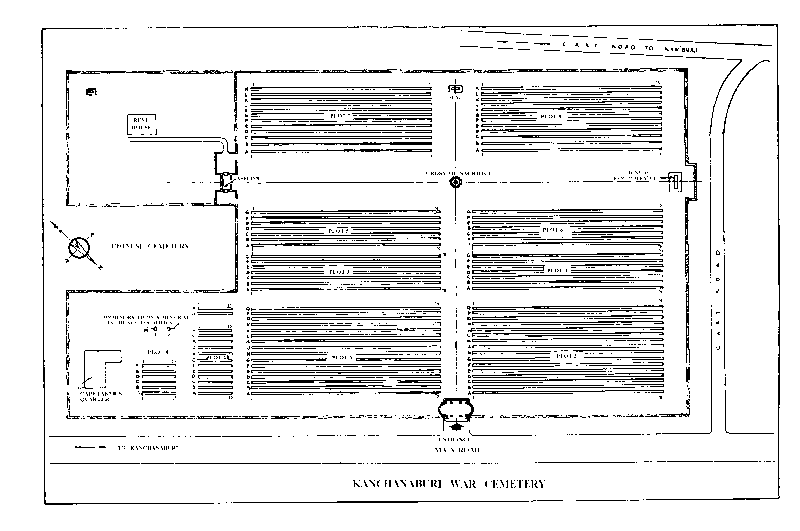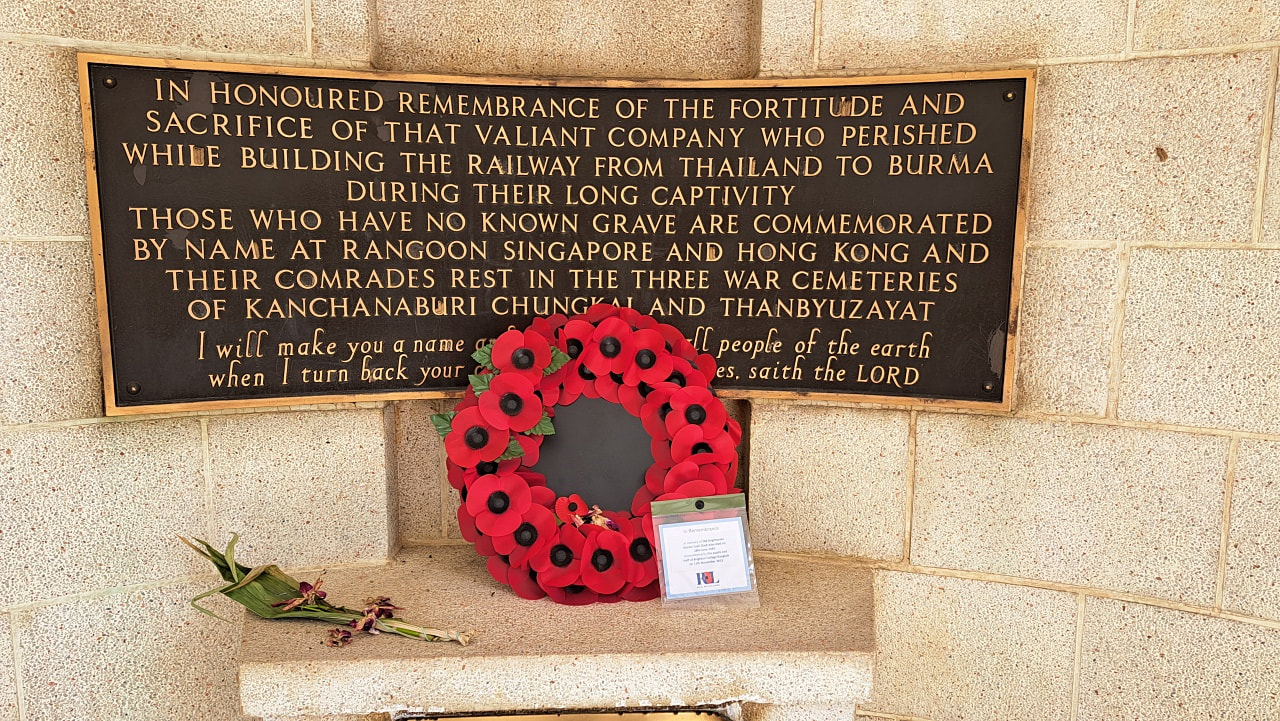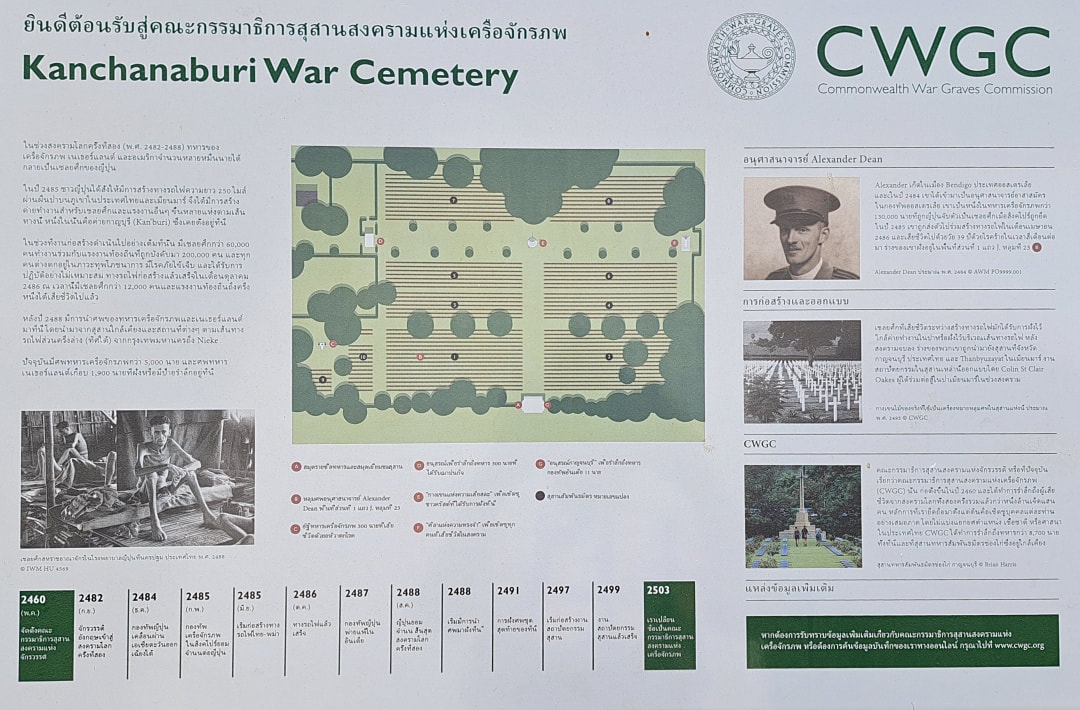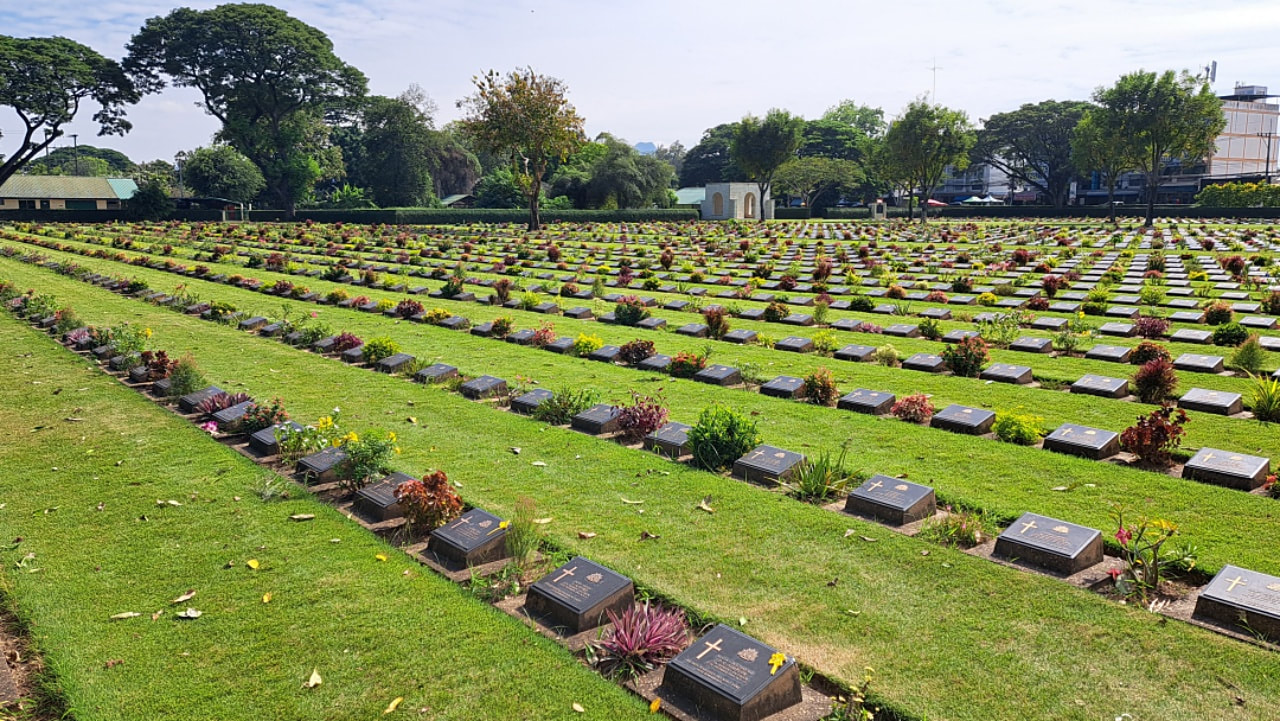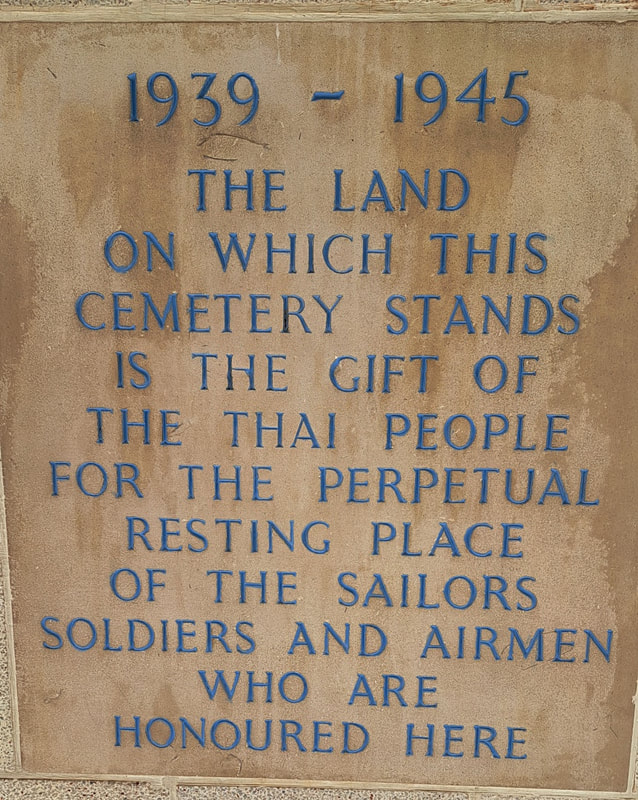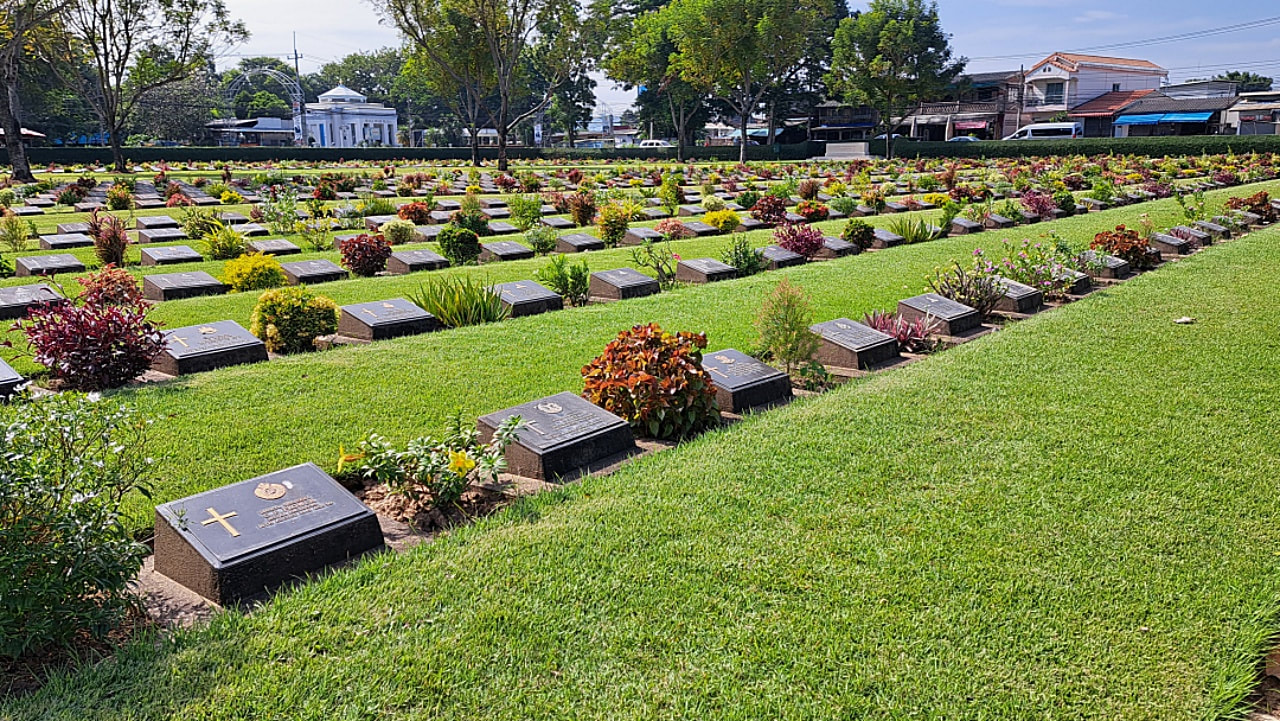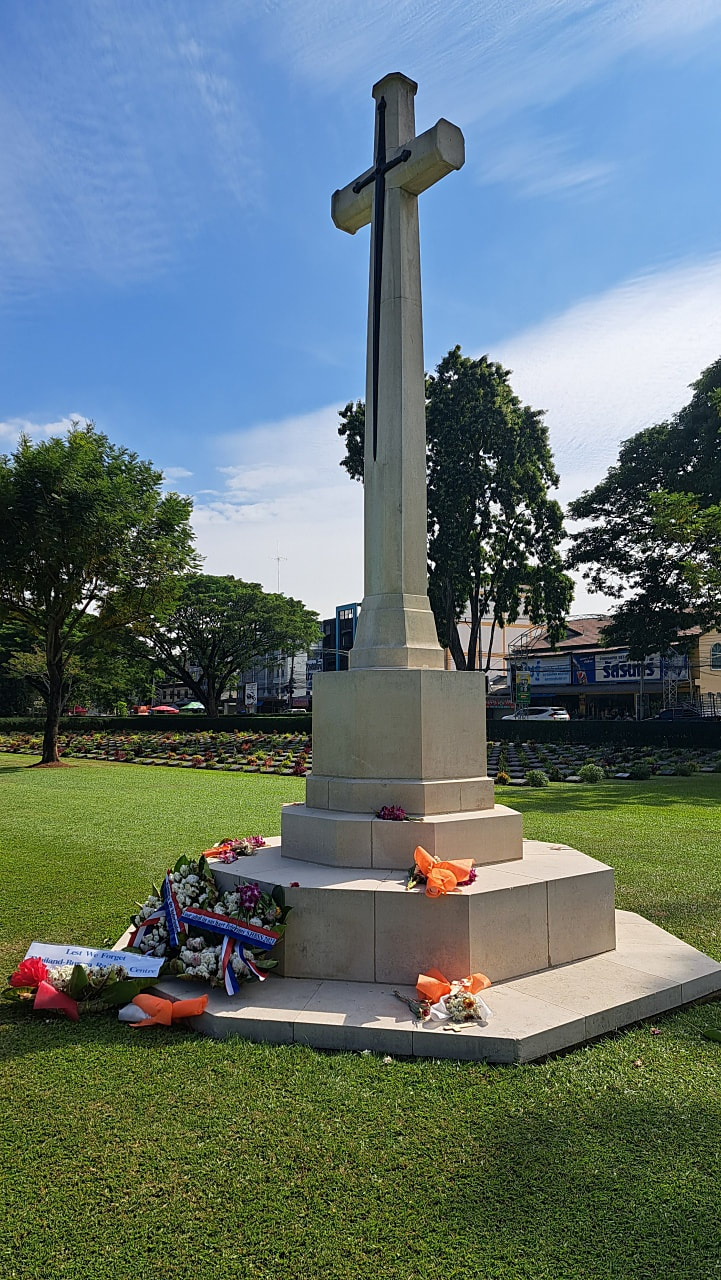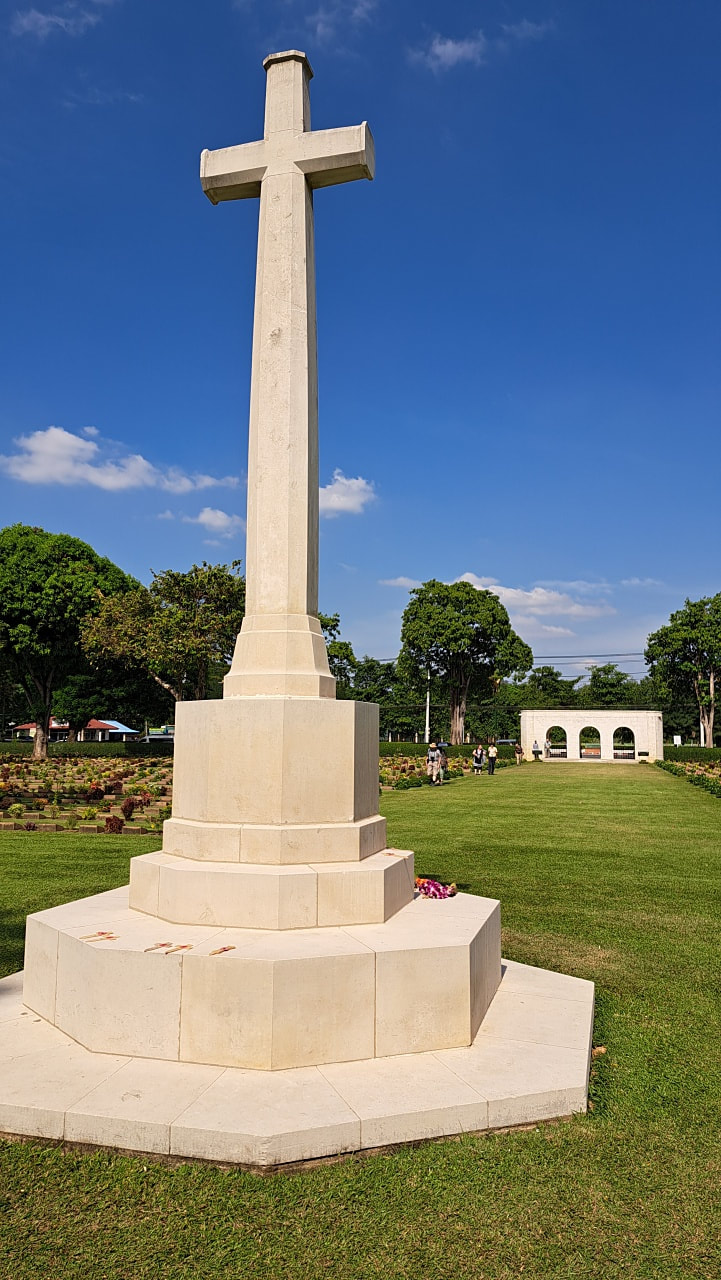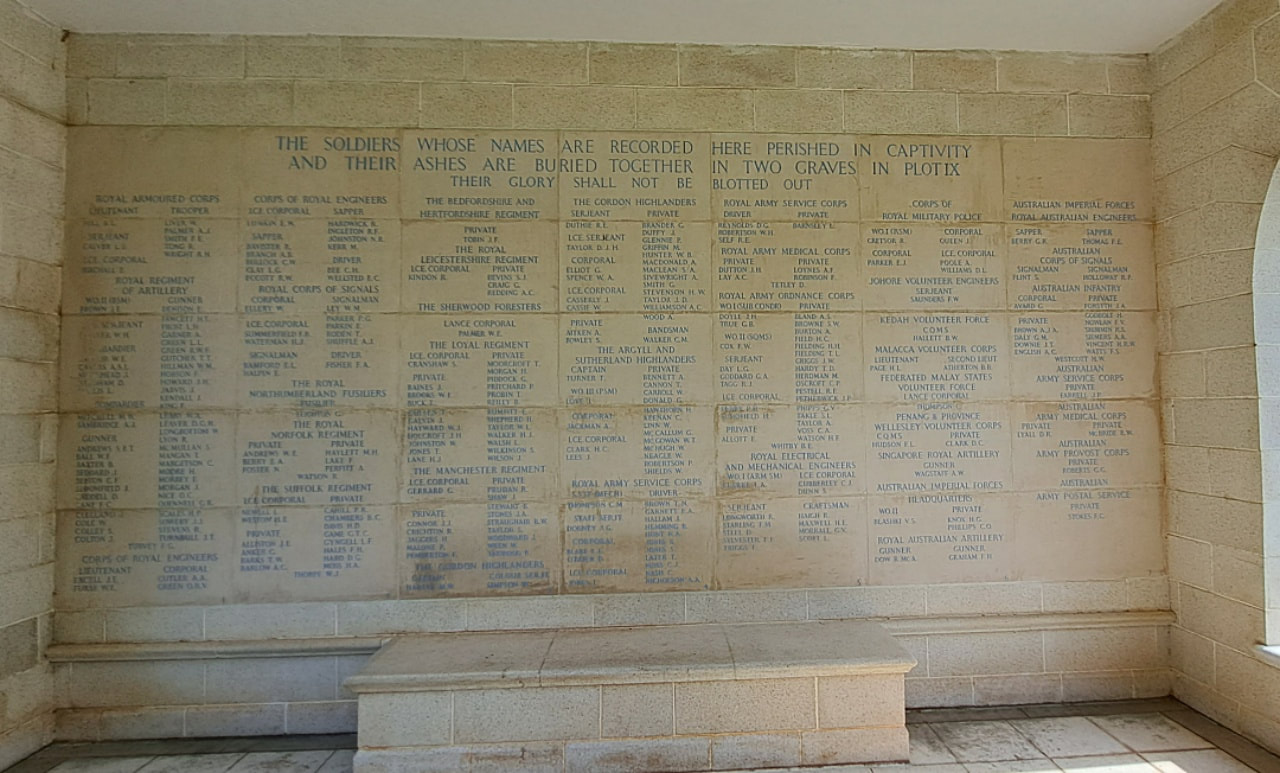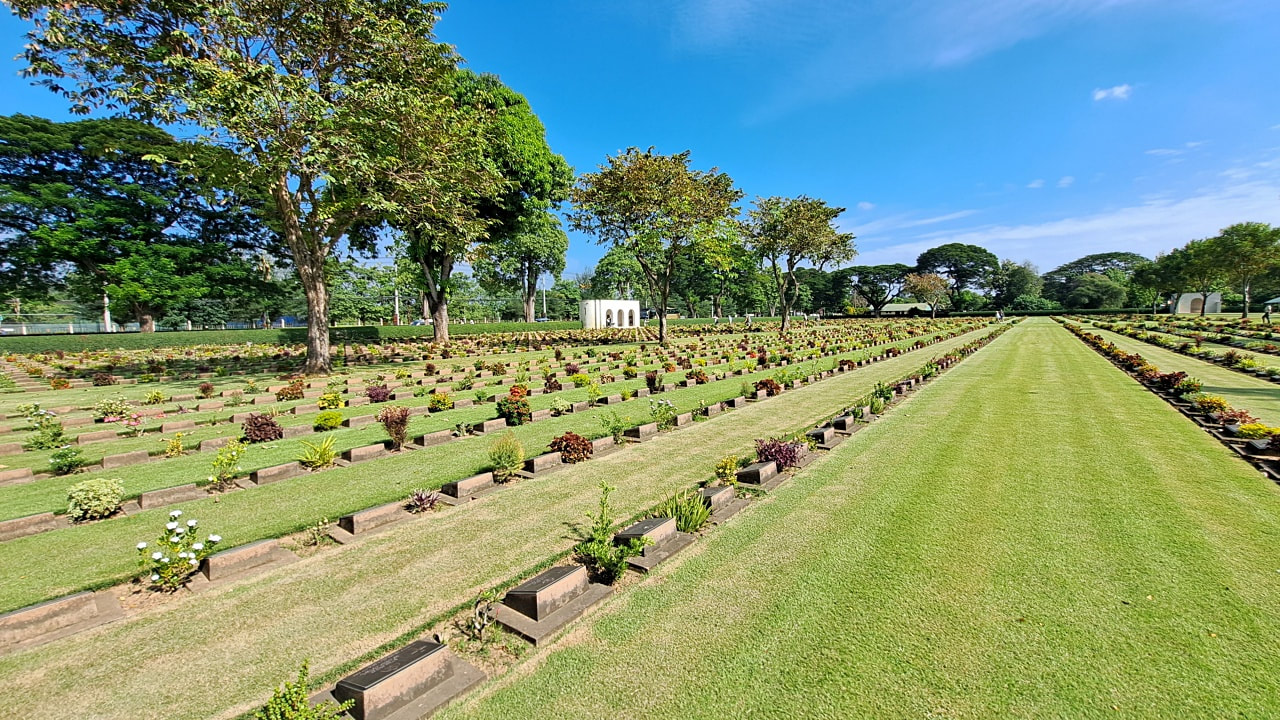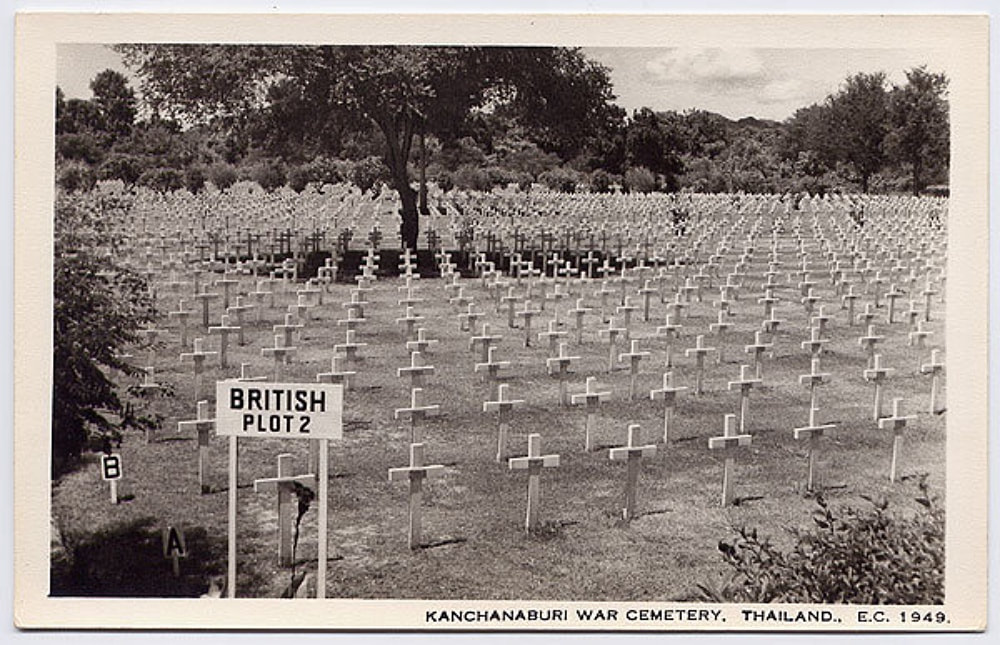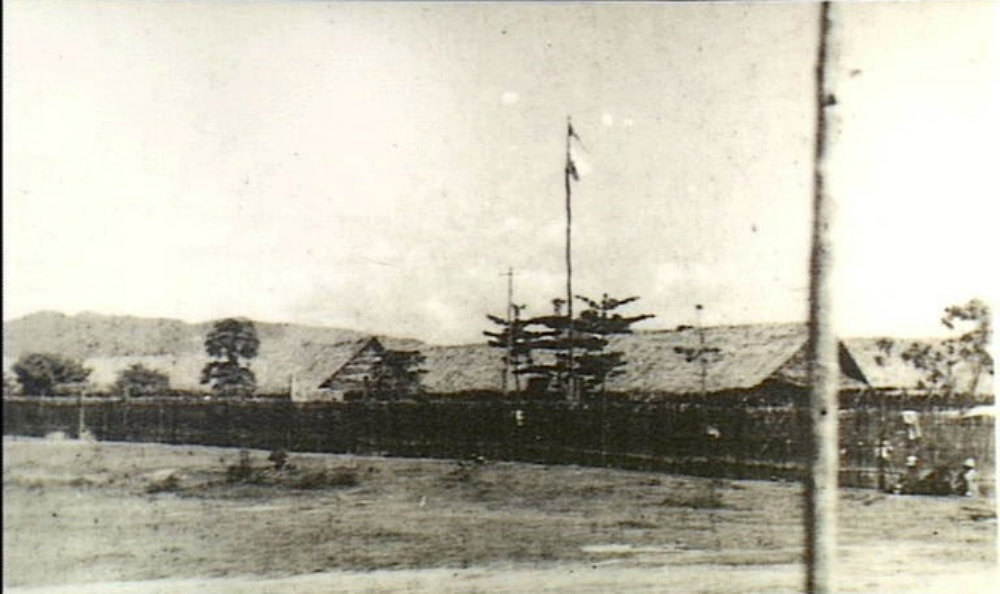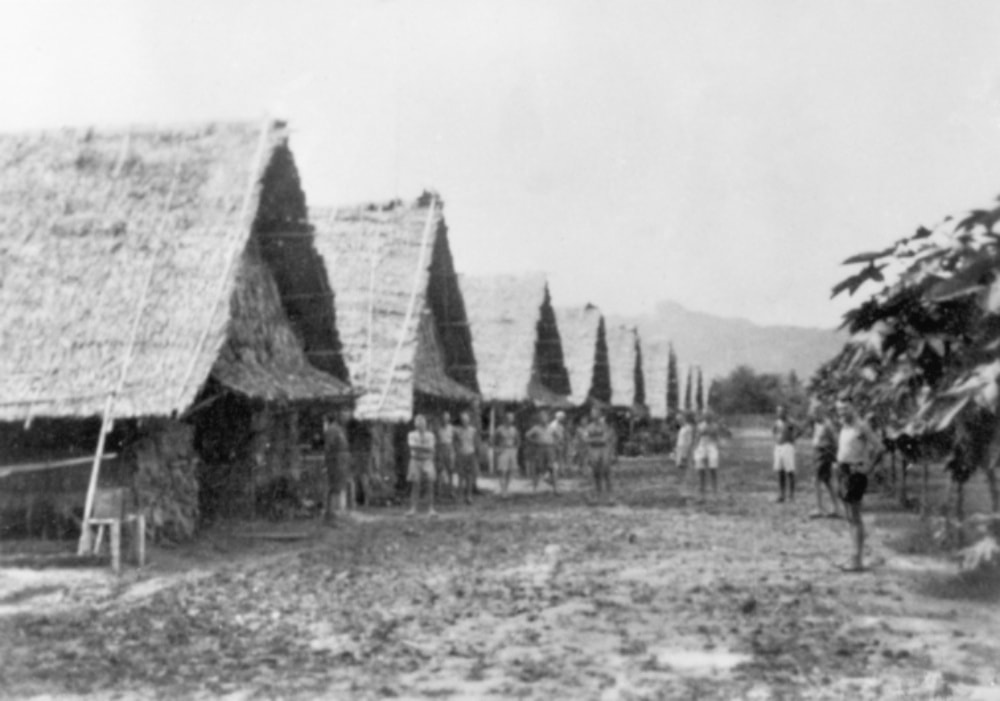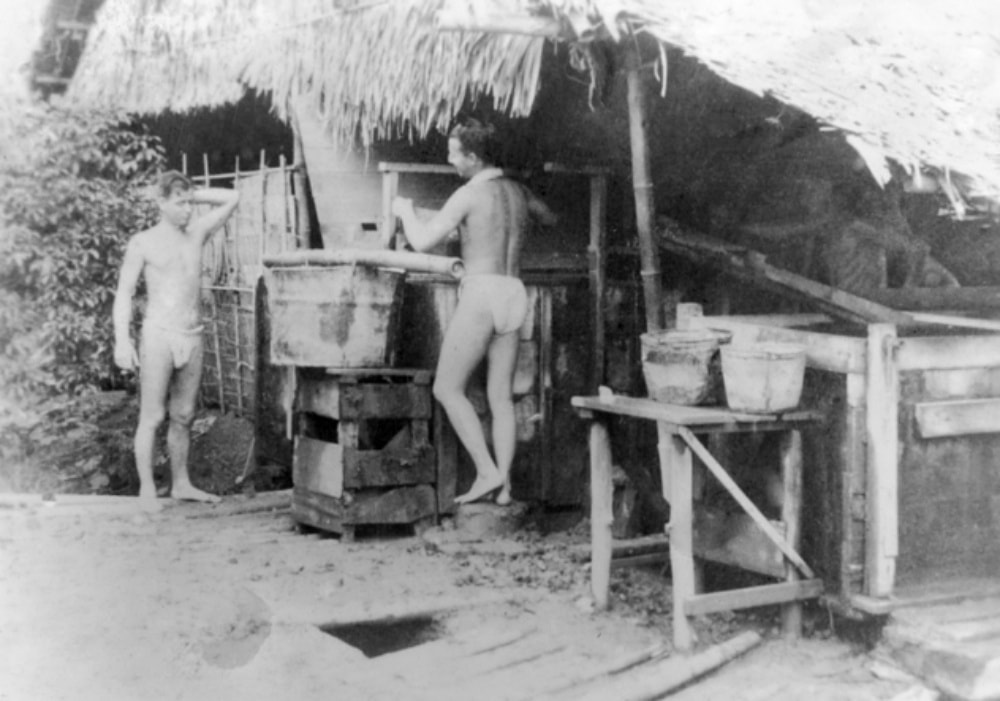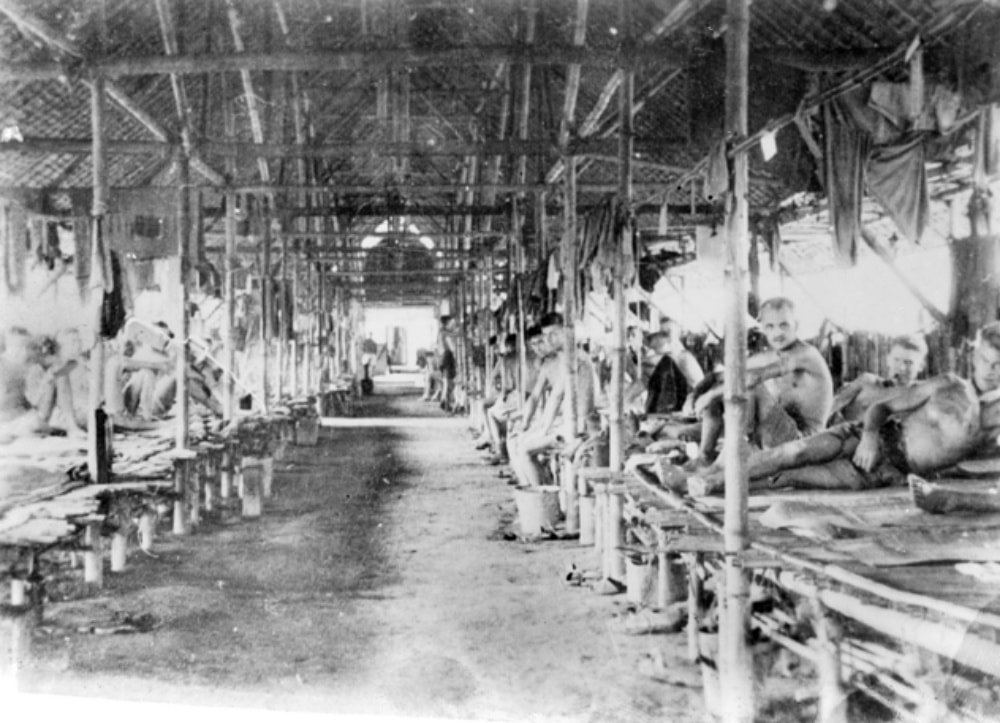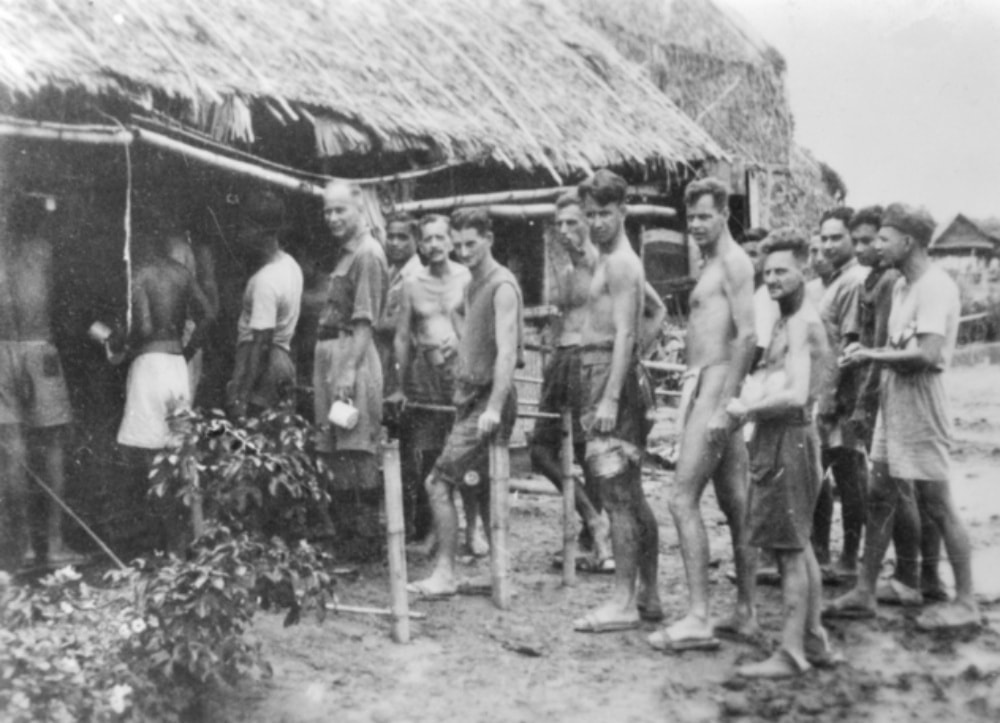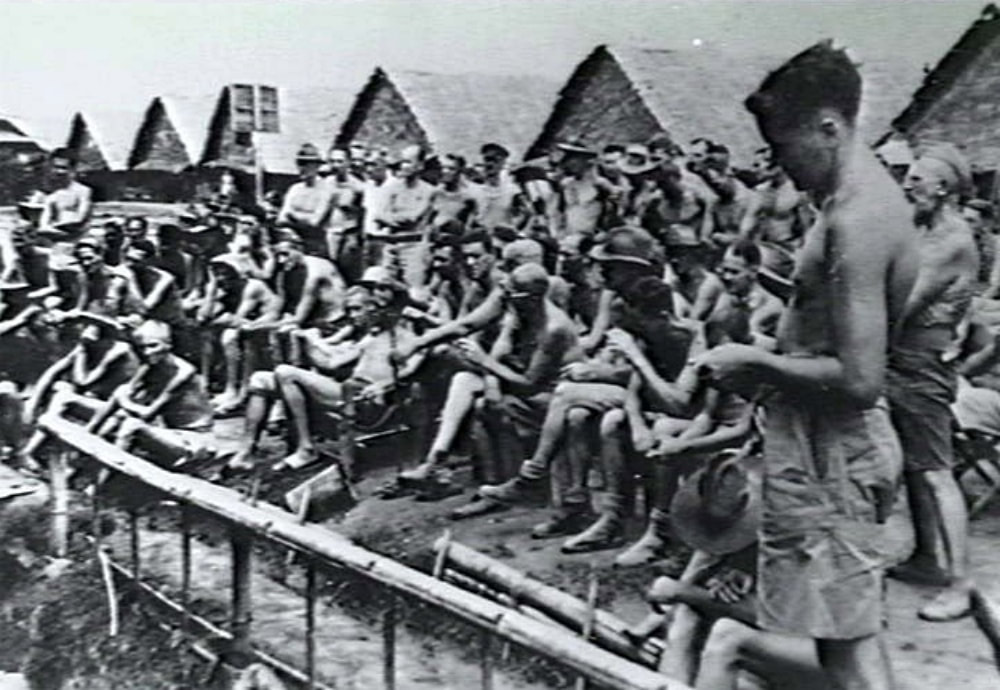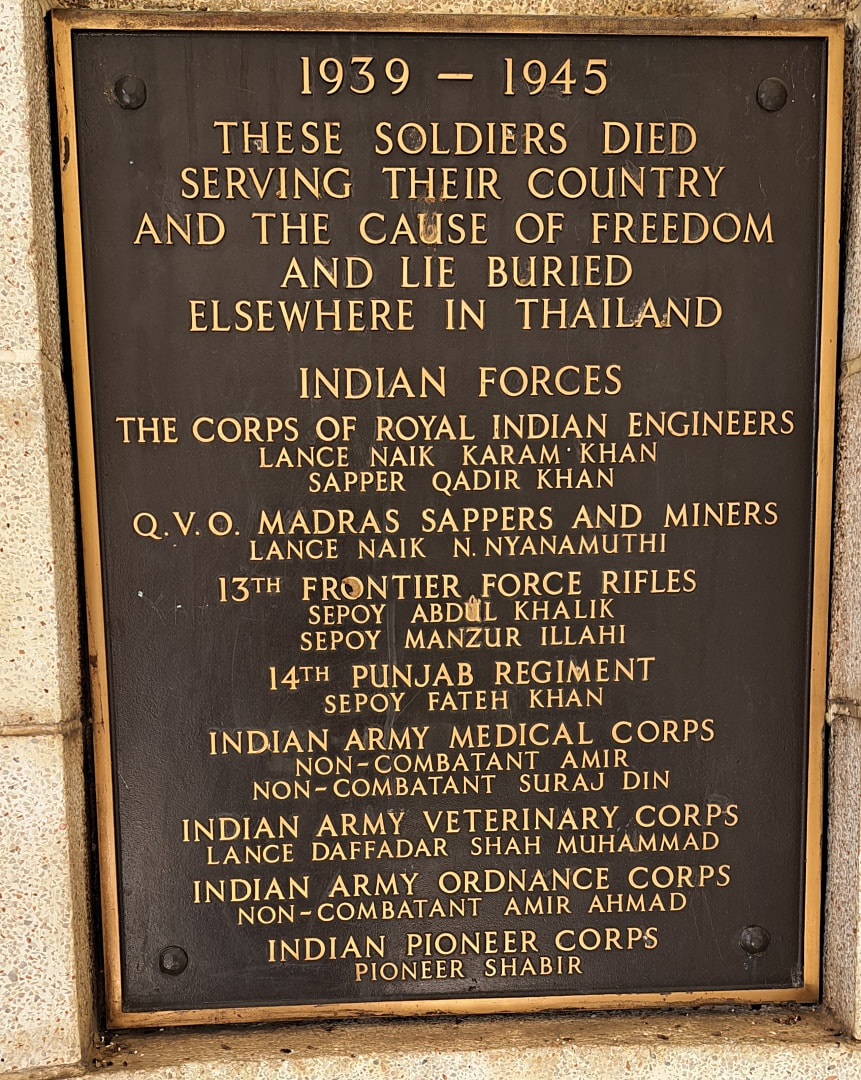KANCHANABURI WAR CEMETERY & KANCHANABURI MEMORIAL
Kanchanburi
Thailand
GPS Coordinates: Latitude: 14.03195, Longitude: 99.52582
Location Information
The town of Kanchanaburi is 129 kilometres North-West of Bangkok and is best reached by road, along the National Highway which runs north from the capital. There are bus and train services from Bangkok. Kanchanaburi War Cemetery is situated adjacent to Saeng Chuto Road which is the main road through the town. When approaching from Bangkok, the cemetery is on the left side of the road, towards the far (northern) end of the town. A Commission signpost faces the cemetery on the opposite side of the road.
Visiting Information
ARRIVAL
The route to the cemetery is signposted and the cemetery is located at the side of Saeng Chuto Road, the main road through the town.
PARKING
There is a large car park at the cemetery with space for vehicles, the car park is firm and level. There is also on street parking nearby.
MAIN ENTRANCE ACCESS & LAYOUT
The main entrance to the cemetery is marked by a large, stone, triple arched memorial entrance building with two steps into building. Inside are stone benches.
There are bronze memorial panels inside the entrance building.
In front of the entrance building are two information signs.
The cemetery is a large rectangular shape, at the furthest point from the main entrance is the Cross of Sacrifice; behind it is a seating area with a stone bench. The cemetery is generally level and turfed throughout.
On the far-right side of the cemetery is the Stone of Remembrance. To the far-left side of the cemetery is a memorial shelter, which contains a stone bench. In this part of the cemetery there is a second seating area with a stone bench.
The cemetery memorial registers are stored in the cemetery service area and can be requested from the gardeners.
ALTERNATIVE ACCESS
It is possible to access the cemetery through the service entrance, next to the office building, where there are no steps.
ADDITIONAL INFORMATION
Opening times for the cemetery are as follows:
0800 hrs – 1700 hrs Monday to Friday
0800 hrs – 1200 hrs Saturday.
Please be aware that there may be snakes in the cemetery.
Historical Information
The notorious Burma-Siam railway, built by Commonwealth, Dutch and American prisoners of war, was a Japanese project driven by the need for improved communications to support the large Japanese army in Burma. During its construction, approximately 13,000 prisoners of war died and were buried along the railway. An estimated 80,000 to 100,000 civilians also died in the course of the project, chiefly forced labour brought from Malaya and the Dutch East Indies, or conscripted in Siam (Thailand) and Burma (Myanmar).
Two labour forces, one based in Siam and the other in Burma worked from opposite ends of the line towards the centre. The Japanese aimed at completing the railway in 14 months and work began in June 1942. The two sections of the line finally met near Konkoita towards the end of October 1943 and the completed line, 424 kilometres long, was operational by December 1943.
The graves of those who died during the construction and maintenance of the Burma-Siam railway (except for the Americans, whose remains were repatriated) were transferred from camp burial grounds and isolated sites along the railway into three cemeteries at Chungkai and Kanchanaburi in Thailand and Thanbyuzayat in Myanmar.
KANCHANABURI WAR CEMETERY is only a short distance from the site of the former 'Kanburi', the prisoner of war base camp through which most of the prisoners passed on their way to other camps. It was created by the Army Graves Service who transferred to it all graves along the southern section of railway, from Bangkok to Nieke.
Some 300 men who died (most from a Cholera epidemic in May/June 1943) at Nieke camp were cremated and their ashes now lie in two graves in the cemetery. The names of these men are inscribed on panels in the shelter pavilion.
There are now 5,085 Commonwealth casualties of the Second World War buried or commemorated in this cemetery. There are also 1,896 Dutch war graves and 1 non-war grave.
Total Burials: 6,982.
World War Two Identified Casualties: United Kingdom 3,569, The Netherlands, 1,896, Australia 1,362, India 12, New Zealand 2, Canada 1. Total 6,842.
World War Two Commonwealth Unidentified Casualties: 139.
Non War Grave: 1.
Within the entrance building to the cemetery will be found the KANCHANABURI MEMORIAL, recording the names of 11 men of the army of undivided India buried in Muslim cemeteries in Thailand, where their graves could not be maintained.
The cemetery was designed by Colin St Clair Oakes.
War Cemetery
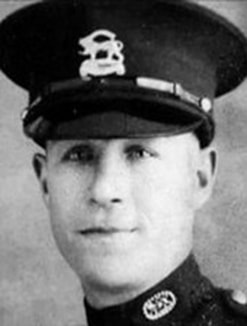
4857720 Lance Corporal
Sande Bockross
1st Bn. Leicestershire Regiment
18th July 1943, aged 27.
Died as a Prisoner of War.
Plot 2. J. 38.
Son of Alfred and Emma Bockross, of Leicester.
A close family friend, you will always be remembered Sande. From Eric Lewis (War Veteran)
His headstone bears the inscription "Your Memory Is A Keepsake; God Has You In His Keeping, We Have You In Our Hearts"
Sande Bockross
1st Bn. Leicestershire Regiment
18th July 1943, aged 27.
Died as a Prisoner of War.
Plot 2. J. 38.
Son of Alfred and Emma Bockross, of Leicester.
A close family friend, you will always be remembered Sande. From Eric Lewis (War Veteran)
His headstone bears the inscription "Your Memory Is A Keepsake; God Has You In His Keeping, We Have You In Our Hearts"
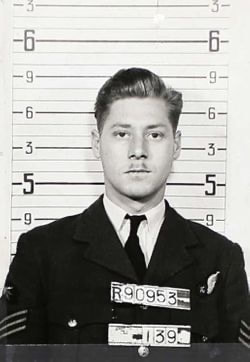
R/90953 Warrant Officer Class I
Ernest Joseph Leonard Bolingbroke
357 Squadron, Royal Canadian Air Force
1st November 1944, aged 29.
Collective Grave 10. L. 6-12.
Son or Ernest Bolingbroke and Emma Bolingbroke (nee Phillips).
On the 1st November 1944, Liberator BZ956 took off at 12 noon detailed to carry out a special operation. The aircraft crashed near Manpang Central Burma, in position, 22.05 North 099.21 East on the topmost slopes of Loi Anglawng at a height of 8537 feet. In a report by a Recovery Party to the Burma-China border, eyewitnesses stated that "the aircraft was to have dropped supplies on a nearby spot and flares had been lit to guide the aircraft."
The other crew members of BZ956 were:
Flight Lieutenant Albert George Carlton (412390) (Wireless Air Gunner)
Warrant Officer Dennis Leslie Francis (189477) (RAFVR) (Pilot)
Flight Sergeant Peter George Masters (1850121) (RAFVR) (Air Gunner)
Flying Officer Reginald Charles Joffre Powell (412179) (Wireless Air Gunner)
Flight Lieutenant Osbourn Sydney Shave DFC (408527) (Pilot)
Flight Lieutenant Sydney Desmond Titterington DFC (411553) (Navigator)
They were reinterred in Kanchanaburi War Cemetery on 4th July 1946.
Ernest Joseph Leonard Bolingbroke
357 Squadron, Royal Canadian Air Force
1st November 1944, aged 29.
Collective Grave 10. L. 6-12.
Son or Ernest Bolingbroke and Emma Bolingbroke (nee Phillips).
On the 1st November 1944, Liberator BZ956 took off at 12 noon detailed to carry out a special operation. The aircraft crashed near Manpang Central Burma, in position, 22.05 North 099.21 East on the topmost slopes of Loi Anglawng at a height of 8537 feet. In a report by a Recovery Party to the Burma-China border, eyewitnesses stated that "the aircraft was to have dropped supplies on a nearby spot and flares had been lit to guide the aircraft."
The other crew members of BZ956 were:
Flight Lieutenant Albert George Carlton (412390) (Wireless Air Gunner)
Warrant Officer Dennis Leslie Francis (189477) (RAFVR) (Pilot)
Flight Sergeant Peter George Masters (1850121) (RAFVR) (Air Gunner)
Flying Officer Reginald Charles Joffre Powell (412179) (Wireless Air Gunner)
Flight Lieutenant Osbourn Sydney Shave DFC (408527) (Pilot)
Flight Lieutenant Sydney Desmond Titterington DFC (411553) (Navigator)
They were reinterred in Kanchanaburi War Cemetery on 4th July 1946.
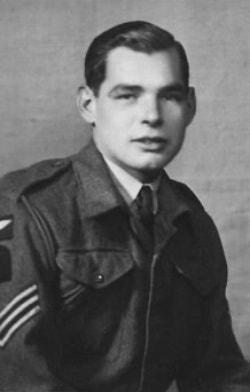
576146 Flight Sergeant
Anthony Hugh Basil Comely
Royal Air Force
24th March 1946.
Plot 10. O. 10.
Flight Sargeant Anthony Hugh Basil Comely was born in 1922. He joined the RAF in the beginning of WW2 and was killed by a sniper in Rangoon, Burma on March 24, 1946. His grave is located in Thailand.
Anthony Hugh Basil Comely
Royal Air Force
24th March 1946.
Plot 10. O. 10.
Flight Sargeant Anthony Hugh Basil Comely was born in 1922. He joined the RAF in the beginning of WW2 and was killed by a sniper in Rangoon, Burma on March 24, 1946. His grave is located in Thailand.
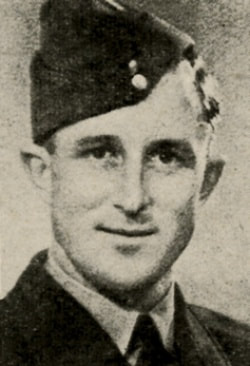
402125 Sergeant
Alvin Messines Dingle
113 Squadron, Royal New Zealand Air Force
24th January 1942, aged 24.
Collective Grave 10. M. 10-12.
Son of Alfred Newton Dingle and Myra Adelaide Dingle, of Hamilton, Auckland, New Zealand.
Alvin Messines Dingle
113 Squadron, Royal New Zealand Air Force
24th January 1942, aged 24.
Collective Grave 10. M. 10-12.
Son of Alfred Newton Dingle and Myra Adelaide Dingle, of Hamilton, Auckland, New Zealand.
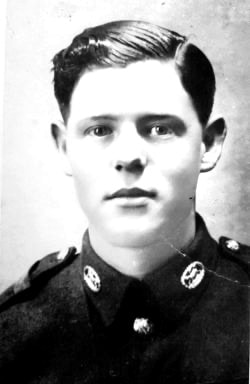
4857789 Private
Francis George Element
1st Bn. Leicestershire Regiment
20th December 1942, aged 25.
Plot 8. C. 32.
Francis George Element
1st Bn. Leicestershire Regiment
20th December 1942, aged 25.
Plot 8. C. 32.
Images in gallery below © M. Reed
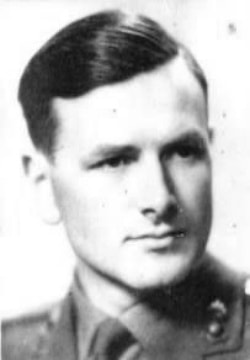
182100 Lieutenant
Adrian Anthony Huxtable
88 Field Regiment, Royal Artillery
5th July 1943, aged 23.
Plot 4. G. 78.
Son of Lt.-Col. Charles Hubert Anthony Huxtable, D.S.O., O.B.E., M.C., and Helen Mary Huxtable, of Preston, Dorsetshire.
His headstone bears the inscription "Beloved Son Of Helen And Anthony Huxtable. Always Remembered"
Educated at Connaught House School, Weymouth, Dorset, and Sherborne School (Westcott House), Sherborne, Dorset. Served as a Lieutenant in the 88 Field Regiment, Royal Artillery. Died on 5 July 1943, aged 23, from dysentery while a prisoner of war in Thailand, he was originally interred at Tonchan South Cemetery (Grave 14) and reinterred in Kanchanaburi War Cemetery on 1st March 1946.
Adrian Anthony Huxtable
88 Field Regiment, Royal Artillery
5th July 1943, aged 23.
Plot 4. G. 78.
Son of Lt.-Col. Charles Hubert Anthony Huxtable, D.S.O., O.B.E., M.C., and Helen Mary Huxtable, of Preston, Dorsetshire.
His headstone bears the inscription "Beloved Son Of Helen And Anthony Huxtable. Always Remembered"
Educated at Connaught House School, Weymouth, Dorset, and Sherborne School (Westcott House), Sherborne, Dorset. Served as a Lieutenant in the 88 Field Regiment, Royal Artillery. Died on 5 July 1943, aged 23, from dysentery while a prisoner of war in Thailand, he was originally interred at Tonchan South Cemetery (Grave 14) and reinterred in Kanchanaburi War Cemetery on 1st March 1946.
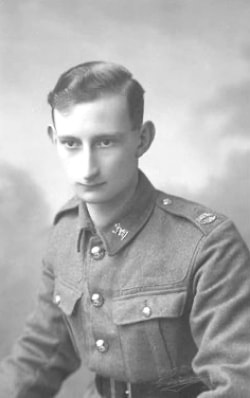
5774853 Corporal
Frank Newland Oldfield
5th Bn. Royal Norfolk Regiment
6th August 1943, aged 23.
Plot 2. Q. 62.
Son of David and Victoria Mildred Oldfield, of East Dereham, Norfolk.
His headstone bears the inscription "And Through The Years Shall Shine His Undimmed Youth." From All He Loved"
Frank Newland Oldfield
5th Bn. Royal Norfolk Regiment
6th August 1943, aged 23.
Plot 2. Q. 62.
Son of David and Victoria Mildred Oldfield, of East Dereham, Norfolk.
His headstone bears the inscription "And Through The Years Shall Shine His Undimmed Youth." From All He Loved"
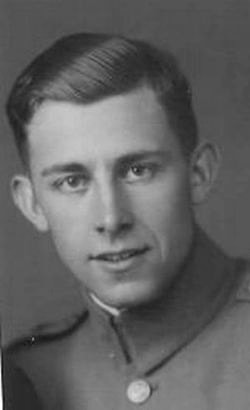
93771 Soldaat
Maarten Van Der Pol
KNIL. Cav. Netherlands Army
24th October 1943.
Plot III. D. Joint Grave 77-78.
Maarten Van Der Pol
KNIL. Cav. Netherlands Army
24th October 1943.
Plot III. D. Joint Grave 77-78.
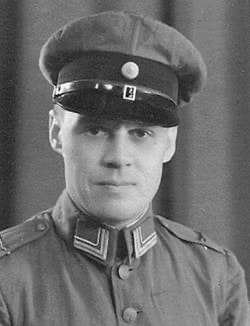
84630 Fourier
Arnold Guillaume Van Geer
KNIL. Art. Netherlands Army
2nd June 1943.
Plot VII. M. 58.
Arnold Guillaume Van Geer
KNIL. Art. Netherlands Army
2nd June 1943.
Plot VII. M. 58.
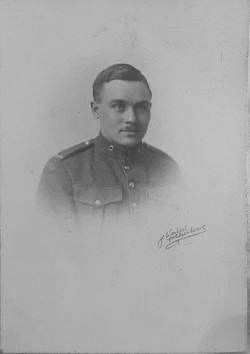
836497 Gunner
Norman Harold Alan Wade
118 Field Regiment, Royal Artillery
28th November 1943, aged 25.
Plot 4. D. 43.
Son of Arthur Charles and Lydia Louise Wade, of Maidstone, Kent.
His headstone bears the inscription "In Loving Memory Of Our Dear Boy. He Lived & Laughs In God's Eternal Spring"
Norman Harold Alan Wade
118 Field Regiment, Royal Artillery
28th November 1943, aged 25.
Plot 4. D. 43.
Son of Arthur Charles and Lydia Louise Wade, of Maidstone, Kent.
His headstone bears the inscription "In Loving Memory Of Our Dear Boy. He Lived & Laughs In God's Eternal Spring"

